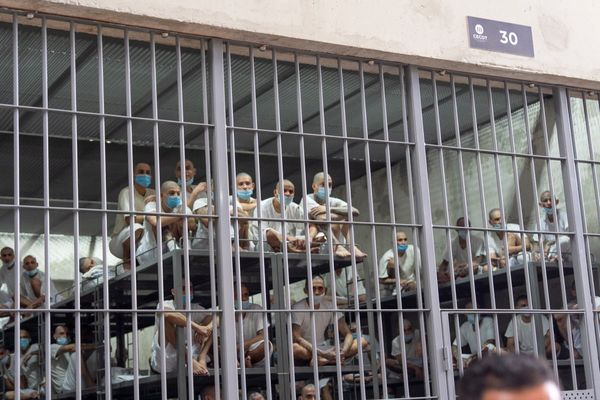
In a matter of nine days, bank runs and global financial distress saw regional U.S. banks like Silicon Valley Bank and Signature Bank go under, while European regulators helped to broker a deal for UBS to buy rival giant Credit Suisse, which had just collapsed.
While central bankers and policymakers alike try to assess what type of economic fallout could come from the March bank runs, the commercial real estate industry is already bracing for pain. Even before these bank failures, commercial office space defaults were rising as owners got squeezed by high vacancy rates, falling property values, and higher interest rates. That’ll only intensify if these bank woes see lenders further tighten lending standards for commercial real estate (CRE) loans.
Earlier this week, analysts at Morgan Stanley took a bearish tone, writing their forecast of “a peak-to-trough CRE price decline of as much as 40%” would be worse than the dip seen during the Great Financial Crisis. However, a report published on Thursday by analysts at UBS, a Zurich-based multinational investment bank, struck a less pessimistic tone, writing that commercial real estate “headlines are worse than reality,” and troubles aren’t likely to create a “repeat of the 2008 liquidity crisis.”
“Rising interest rates, a slowing economy, and increasing vacancy rates in office buildings have weighed on the sector in the last couple of years. Now, an expected credit crunch on the back of rising cost of funding for banks may further compound its troubles. However, in our view, while the risks in CRE have certainly increased, it does not pose a wider systemic risk,” wrote UBS Americas chief investment officer Solita Marcelli and UBS equity strategist Jonathan Woloshin.
Here’s how Marcelli and Woloshin see the CRE landscape.
Commercial real estate defaults are coming
In 2023 and 2024, approximately $1.2 trillion of the outstanding $5.4 trillion in commercial real estate debt (excluding multifamily) will “mature” and need to be refinanced at, presumably, higher interest rates. Those elevated debt payments, wrote Marcelli and Woloshin, will “only add to existing challenges around servicing debt—especially in areas like office and certain segments of retail where cash flows have become challenged due to post-pandemic behavior.”
Simply put: Owners of commercial office space are seeing a hit to their property values and revenues (i.e., rising vacancy rates as remote work proves sticky) just as their debt payments rise (i.e., maturing loans). The recent bank failures will only make this messier.
“A growing share of CRE loans from banks have become serviced by regional and local banks in recent years—with around 70% now coming from this population. Given the recent collapses of both SVB and SBNY—both of which happened to have a large share of CRE as a percentage of their total loan book—the market has grown concerned that regulations around these banks will tighten and lending will become increasingly restrictive, thus reducing lending access,” wrote Marcelli and Woloshin at UBS.
The result? The UBS analysts say CRE “default rates will likely” continue to rise.
‘A liquidity crisis similar to 2008 remains unlikely’
But an uptick in CRE defaults doesn’t mean doomsday for banks, write the UBS analysts.
For starters, the UBS team points out that the most troubled sector of commercial real estate (i.e., office space) only accounts for 15% of the total value of U.S. commercial real estate.
“About $1.3 billion of office mortgage loans are currently slated to mature over the next three years. It’s possible that some of these loans will need to be restructured, but the scope of the issue pales in comparison to the more than $2 trillion of bank equity capital. Office exposure for banks represents less than 5% of total loans and just 1.9% on average for large banks,” wrote Marcelli and Woloshin. The “stress” that does come “could take several years to unfold as leases come due over an extended period of time.”
Unlike, say, ground retail leases, office space leases are often in terms that extend near or beyond 10 years. Those long leases are why office space owners didn‘t buckle as occupancy rates plummeted during the pandemic. That long time horizon is another reason why UBS doesn’t foresee CRE spurring a 2008-style banking crash.
“We don’t believe a repeat of the 2008 liquidity crisis is likely,” wrote Marcelli and Woloshin. “In our view, the health of the overall banking system and market liquidity conditions are substantially better than they were during the GFC.”
If a recession hits, things could get murkier
As the Federal Reserve nears the end of its rate hiking cycle, employment and economic activity at large haven’t been significantly impacted. While most economists are weary of uttering the words “soft landing,” there’s also no consensus on whether the much talked about recession will actually happen.
But if a sharp recession does come, commercial real estate in the United States and Europe would be in for even more trouble.
“A more severe economic downturn (hard landing) over 2023–24 could pull forward [commercial real estate] credit issues that would have otherwise been avoided or stretched over a longer period thereby pressuring banks’ earnings growth and profitability…While we view potential losses as manageable, we would expect a meaningful deterioration in CRE to pressure banks’ shares due to both earnings/profitability risk,” wrote Marcelli and Woloshin.







